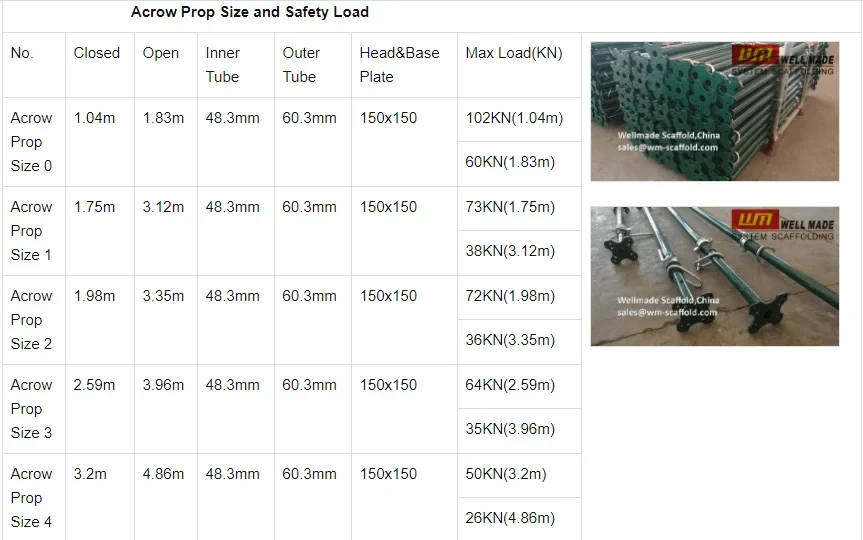Products
Message
Formwork Prop
In the intricate process of concrete construction, every element plays a pivotal role in ensuring the successful outcome of a project. Among these elements, the formwork prop stands out as an indispensable tool. A formwork prop is an adjustable metal support frame, typically crafted from high - quality steel. Its primary function is to provide reliable support and secure fixation for the formwork during the concrete pouring process, guaranteeing that the resulting concrete structure maintains precise shape and size.
+8613821480207
wlb57958340@gmail.com
CONTACT US
Products Detail
Message
Products Recommended


In the intricate process of concrete construction, every element plays a pivotal role in ensuring the successful outcome of a project. Among these elements, the formwork prop stands out as an indispensable tool. A formwork prop is an adjustable metal support frame, typically crafted from high - quality steel. Its primary function is to provide reliable support and secure fixation for the formwork during the concrete pouring process, guaranteeing that the resulting concrete structure maintains precise shape and size.
Structure and Design
Formwork props are engineered with a focus on strength and adjustability. The frame is composed of sturdy steel components, including vertical posts and horizontal cross - members. The vertical posts are often designed with adjustable mechanisms, such as threaded sections or telescoping features. This adjustability allows construction workers to fine - tune the height of the prop, accommodating different levels of formwork and varying construction requirements. For example, in multi - storey building construction, formwork props need to be adjusted to different heights for each floor's concrete slab.
The horizontal cross - members play a crucial role in distributing the load evenly across the formwork. They are firmly attached to the vertical posts, creating a stable and rigid support system. The joints between these components are designed to be robust, ensuring that the prop can withstand the substantial forces exerted during concrete pouring, such as the weight of the wet concrete and the pressure from the vibration process used to eliminate air bubbles.
Material Advantage: Steel
Steel is the material of choice for formwork props due to its numerous advantages. High - strength steel offers exceptional load - bearing capacity. It can endure the heavy loads imposed by the formwork filled with wet concrete without bending, buckling, or deforming. This strength is vital as any failure in the formwork prop could lead to catastrophic consequences, such as the collapse of the formwork and potential damage to the concrete structure.
Moreover, steel is highly durable. It can withstand harsh construction environments, including exposure to moisture, temperature variations, and physical impacts. This durability ensures a long service life for formwork props, making them a cost - effective investment for construction companies. In addition, steel is resistant to corrosion when properly treated, further enhancing its reliability in various construction settings, whether it's a coastal building project with high humidity or an inland construction site with changing weather conditions.
Applications in Concrete Construction
Formwork props are extensively used in a wide range of concrete construction projects. In building construction, they are essential for supporting the formwork for concrete slabs, beams, and columns. When constructing a residential house, formwork props hold up the formwork for the ground floor slab, allowing the concrete to be poured and set into the desired shape. In commercial building projects, such as office towers, formwork props are used at every floor level to support the formwork for large - scale concrete slabs and structural columns.
In infrastructure construction, formwork props are equally important. For example, in the construction of bridges, they support the formwork for the bridge deck and the piers. The ability to adjust the height and angle of formwork props makes them suitable for the complex geometries often found in bridge construction. In the construction of tunnels, formwork props are used to support the formwork for the tunnel lining, ensuring the circular or arched shape of the tunnel is accurately maintained during concrete pouring.
Installation and Maintenance
Installing formwork props requires precision and care. Workers must first ensure that the base on which the prop is placed is stable and level. Uneven or unstable bases can cause the prop to tilt or collapse, endangering the entire formwork system. Once the base is prepared, the formwork prop is erected, and its height is adjusted to the required level. The connections between the vertical and horizontal components are then tightened securely.
Regular maintenance is crucial to keep formwork props in optimal condition. Inspections should be carried out before each use to check for any signs of damage, such as cracks in the steel, loose joints, or corrosion. If any issues are detected, the props should be repaired or replaced immediately. After use, formwork props should be cleaned to remove any concrete residue, which can cause corrosion over time. They should also be stored in a dry and protected area to prevent rusting.
In conclusion, formwork props are a cornerstone of concrete construction. Their high strength, adjustability, and durability, combined with proper installation and maintenance, make them essential for ensuring the accuracy and integrity of concrete structures. By understanding the significance and proper use of formwork props, construction professionals can enhance the quality and safety of their concrete construction projects.
Thank you for your interest in our products. "*" Indicates the Fields are Mandatory
Leave a Message
Thank you for your interest in our products. "*" Indicates the Fields are Mandatory





